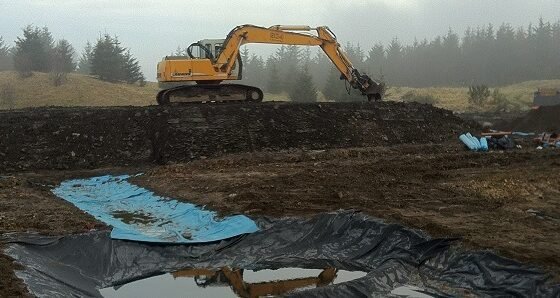How to Dispose of Contaminated Soil: A Guide By Us
Introduction
Disposing of contaminated soil can be a very difficult task any anybody in the construction industry. Especially when unforeseen hazardous materials are found in the soil. At UK Construction Waste Co, we completely understand these challenges and are here to guide you through the process to ensure complete compliance in considered with regulations while protecting the environment at the same time.
What is Contaminated Soil exactly?
Contaminated soil is usually found in locations with a large human activity or industrial presence. It often includes substances that can exceed natural levels and pose ecological and health risks to the public. Typical contaminants can include things like the following types:
Pesticides: Often utilized in agriculture, they can leach into the soil which can be very dangerous.
Petroleum Products: Fuel spills and industrial waste introduce harmful hydrocarbons.
Heavy Metals: Lead, arsenic, and other metals from industrial processes.
Asbestos: From building materials, asbestos fibres can be a major contaminant and need to be managed very carefully for any construction site.
Volatile Organic Compounds (VOCs): Chemicals like toluene and trichloroethylene need to be overseen extra carefully.
Creosote: Used for wood preservation, they can be very harmful when soaked into the soil.
These types of contaminants have the possibility to harm any ecosystems, groundwater and human health, proper disposal and treatment must be considered at all times during this process.
How can you Identify Contaminated Soil?
Contaminated soil can result from diverse sources such as industrial runoff, improper disposal of any waste, and biological disasters. Any indications of contamination include changes in potential soil colour, dead vegetation, and unusual odours. If you do suspect any contamination at your site, it’s vital to perform a professional soil test to determine the exact contaminants and their engagements. This must be dealt with as quickly and as efficiently as possible.
Important Steps for Proper Disposal of Contaminated Soil
Pre-Screening and Testing:
Know Before You Send: Make sure to confirm that the soil is tested way before attempting to dispose of it at a regular landfill site. This helps to avoid any unnecessary transport costs and fines for your site which you will want to avoid.
Engage a Certified Testing Service: Only certified experts can accurately test and recognise hazardous materials in your soil, ensure to listen to their advice.
Select the Right Disposal Partner:
Work with Certified Companies: Select a disposal firm with valid hazardous waste transporter enrollment. In the UK, look for certifications from the Environment Agency or similar bodies that can support them.
Avoid Brokers: Hazardous waste agents can increase costs and confuse the disposal procedure. Work directly with certified disposal companies where feasible.
Classification of Waste:
Select Waste Quantity: Decide if you are a small or large amount generator as additional regulations may apply.
Develop a Disposal Plan: A licensed disposal firm can support classifying the waste, ensuring you only pay for hazardous waste disposal if necessary and where required.
Transporting the Soil:
Licensed Transporters: Ensure to use only licensed hazardous waste transporters to move the ground. Confirm they follow all regulatory requirements.
Tailored Transportation Plans: Make sure to work with the removal unit to create a tailored plan that minimises risk and ensures compliance at all times.
Documentation and Compliance:
Regulatory Paperwork: Finish all required paperwork to document the disposal procedure. This is vital for legal adherence and future reference.
Proof of Disposal: Obtain proof of proper disposal from the disposal unit to keep records and demonstrate adherence.
Post-Disposal Monitoring:
Site Monitoring: After removal, check the site to ensure no residual contamination remains. This may involve periodic soil testing and inspection.
Conclusion
By pursuing these steps and partnering with certified professionals, you can manage contaminated soil effectively and responsibly. At UK Construction Waste Co, we are dedicated to delivering masterful advice and assistance to help you navigate this difficult process. You can reach us today for a talk and ensure your task proceeds safely and smoothly.


